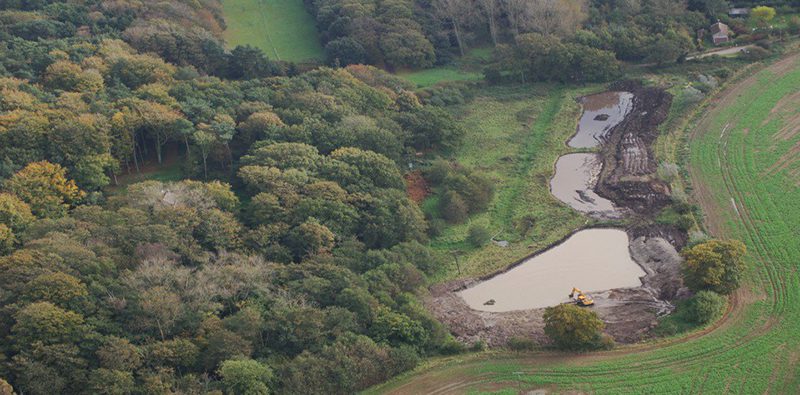
A brand new wetland is to be created in Norfolk, funded by Anglian Water and created in partnership with Norfolk Rivers Trust and the Environment Agency, it was announced in late June.
The new one-hectare site will act as an innovative, natural treatment plant for over a million litres of water a day. Used but treated water will pass through the wetland to be further filtered and cleaned before it’s returned to the environment in the River Ingol.
This additional, natural filtering process will further improve the quality of water being returned to the river, benefiting the whole of the River Ingol, which is a spring-fed chalk stream. Not only will the wetland have a practical purpose, it will be a huge biodiversity asset and attract various breeding birds, amphibians, bats, water voles to the local environment.
The wetland site will be constructed, maintained and operated by Norfolk Rivers Trust. The Trust has now submitted an application for planning permission to the Kings Lynn and West Norfolk Borough Council. Work on the site is anticipated to begin by the end of the year, with a completion date proposed for March 2018.
Quality treatment without the carbon footprint
Regan Harris from Anglian Water said: “This is a really exciting project to be involved in and a first for any water company in England. Wetland treatment sites like this enable us to treat used water to the same high standards as our conventional sites while vastly reducing our carbon footprint, costs and most importantly, enhancing the local environment and ecosystems.”
The £500,000 project, will create one hectare of new wetland, made up of four shallow interconnected ponds which will be planted with native chalk wetland species such as iris, sedges, rush, marsh marigold and watercress.
The wetland plants work to naturally clean the water, removing ammonia and phosphate before it goes back into the river. Anglian Water’s existing treatment plants already remove the majority of these substances in line with tight environmental permits issued by the Environment Agency. The wetland will filter it further and ensure it is of an even higher standard, removing the need for expensive, high carbon treatment equipment conventionally used.
Regan continued: “Chemicals like phosphates and ammonia come from urbanisation, domestic products like detergents, as well as from human and animal waste. We need to find more natural ways to treat them rather than adding more and more chemicals in our treatment processes, which is unsustainable. So the wetland is a great solution.
“It’s excellent for biodiversity, and does this job for us naturally. We want this type of scheme to become more commonplace as a water treatment option in the future as it’s an excellent example of how by working together, we can provide innovative solutions for our treatment processes, ensure they are sustainable for future generations and protect the environment.”
The wetland is expected to be fully established by next summer and will work to remove the substances from the water immediately, even when the plants are young. It will treat over a million litres of water a day before it flows back into the river.
Jonah Tosney, Project Manager at Norfolk Rivers Trust said ‘We created a similar wetland system at Northrepps, near Cromer, in 2014, working closely with the local community. The result has been simply fantastic, with much improved water quality in the River Mun, a lake downstream as well as increased biodiversity. The wetlands starts to work almost immediately and we have shown these natural systems are great solutions to protect and improve the environment’.
The River Ingol is one of Norfolk’s precious chalk streams which are renowned for their rich and diverse species that live within them. Since 2012, Norfolk Rivers Trust has led many projects across the country aimed at protecting and reestablishing these unique habitats.
Steve Hopper from the Environment Agency said: “Although Ingoldisthorpe Water Recycling Centre meets all the current quality procedures, Environment Agency monitoring of the River Ingol has identified that it is the largest source of phosphates entering the river. If left alone high levels of phosphates cause rapid algae growth which can damage the natural river environment. By working together to develop this scheme we expect the water reaching the river will be of better quality allowing healthier, more natural, plant communities to flourish.”








